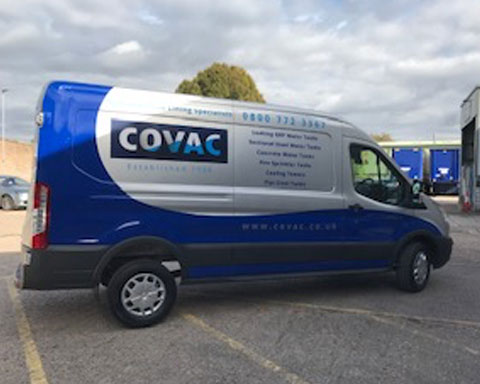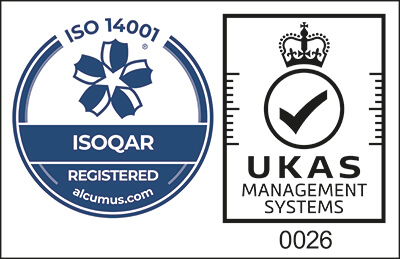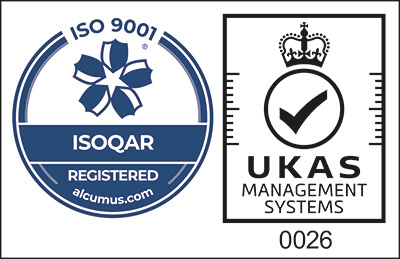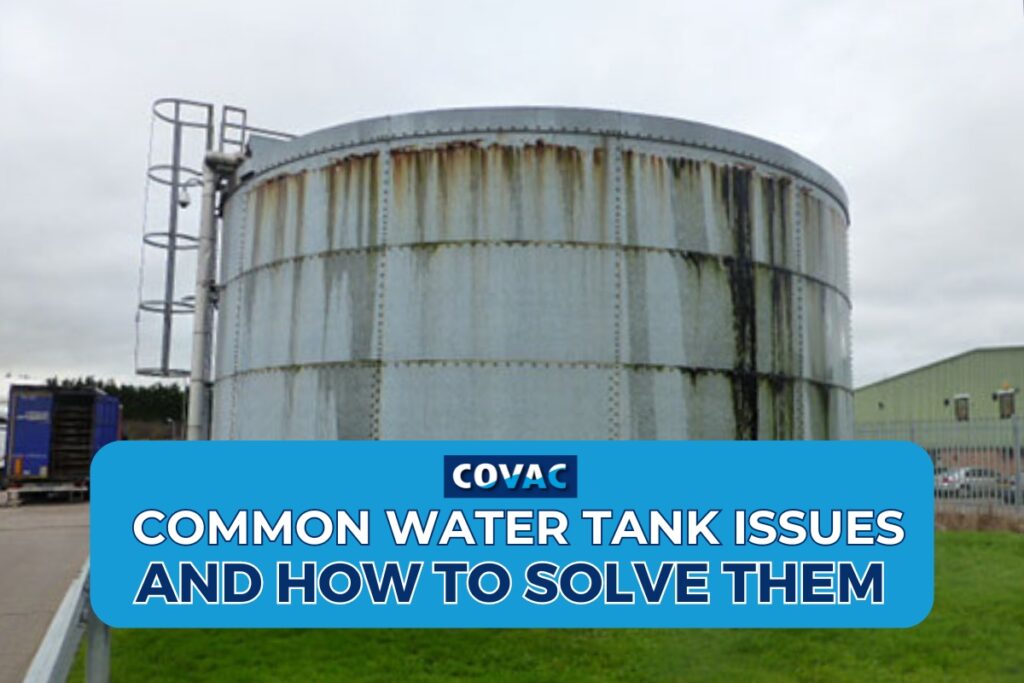
Water storage tanks are essential for various purposes from agricultural or commercial use to home tasks. Therefore, any water tank issues could have a tremendous negative impact on your daily operations.
In this article we’ll have a look at the five most common water tank issues. We’ll also give you our expertise on how to avoid problems with your water tank.
What are the Common Problems with Water Tanks?
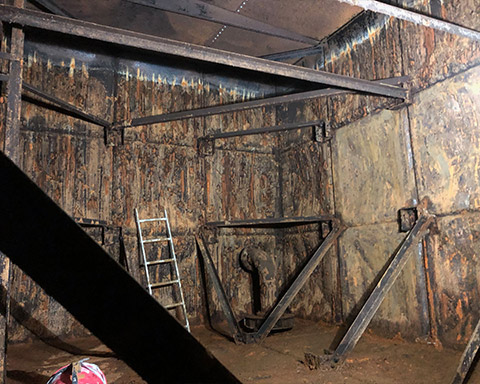
Most issues with water tanks arise from improper maintenance, exposure to severe weather conditions and corrosion. Build up of sediment and algae or corroded tank surfaces are only a few examples of the problems you may encounter. Read on to learn more about the common water tank issues to look out for.
Sediment Buildup in Water Storage Tanks
One of the main problems with water tanks is the buildup of sediment. This is a particularly common issue with rainwater tanks. You need to regularly remove solids that accumulate at the bottom of the tank and along the walls to prevent build up.
Installing a layer of water tank lining can help resolve this problem in the long-run, reducing the accumulated sediment.
Leakages or Broken Pipes
Leaks are another issue you might encounter with your water tank. A leaking tank can often be the result of corrosion. But it is also common for leaks to occur around tank fittings like pipes and connectors. Bent or broken pipes are another potential cause leading to leakages in your tank.
To prevent a tank from leaking it’s important to inspect it regularly and rectify any issues found with it before they escalate.
Algae Growth in Water Storage Tanks
Algae is a persistent problem you will often find with white or transparent plastic water tanks. These materials offer no protection from direct sunlight thus providing the perfect growing conditions for algae. If left unprotected, algae will quickly coat the inside of the tank, flowing into the whole system and polluting your water supply.
Chemical additives in the water can limit algae contamination, however, they only provide a temporary solution. The most effective way to stop the growth of algae is to limit the water’s exposure to sunlight. This can be done by applying a coating system on the inside.Where this is not an option due to the condition of the tank, you might need to consider a full tank replacement, opting for a material that doesn’t allow sunlight in.
Water Tank Tipping
If they’re not properly installed, water tanks can settle unevenly or tip, creating potential hazards. Water tanks can store thousands of litres of water depending on their purpose. If they tilt hazardously, posing a danger for people passing by. Water tanks should always be installed on a levelled surface and to the manufacturer’s standards.
Legionella
Legionella is a hidden danger in unmaintained potable water tanks. It usually grows in water storage tanks including cooling towers, hot and cold water systems and other types of water tanks. This bacteria causes Legionnaires disease – a lung infection that causes cough, chest pain and flu-like symptoms.
To prevent a Legionella outbreak, it’s essential to maintain drinkable water storage tanks. This should include regular cleaning of the whole tank. Tank lining can again help here, creating a barrier between the surface of the tank and the water stored inside.
How to Avoid Water Tank Issues?
So how do you prevent problems with your water tank? The key is regular maintenance to ensure no issues occur in the first place.
Regular Water Tank Cleaning and Maintenance
Cleaning and inspecting your water tank on a regular basis is essential for preventing potential problems. This process involves conducting a visual inspection of the outside of the tank and its connecting elements.
Additionally, you should also drain the tank and thoroughly clean the inside, again checking for any visible wear and damage. Should you find any issues, don’t put off calling a professional to repair your water tank. Small water tank issues can quickly turn into big ones, if left untreated.
Water Tank Lining
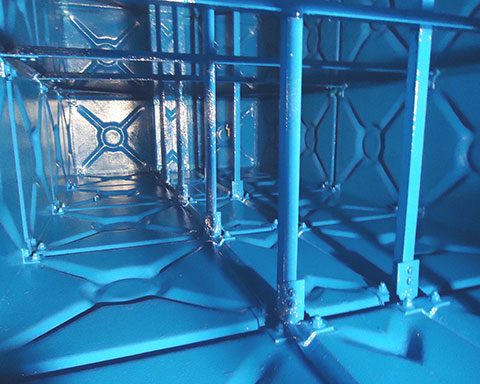
Using a durable lining system is the best way to extend the lifespan of your water tank and stop any issues from arising. An interior tank coating is a protective layer applied to the inner surface of your tank.
Tank lining can protect the water in your tank from bacteria, algae, rust and other common water contaminants. It can also stop your tank from deteriorating, extending its life span.
Avoid Water Tank Issues with COVAC
Want to avoid future water tank issues? COVAC can help maintain your water tank with industry-leading tank lining service. From drinking water tanks to cooling towers, we provide expert lining and refurbishment solutions to keep your tank in excellent condition and protect your water supply. We use the Acothane DW solvent-free polyurethane coating system along with other WRAS and DWI approved products to guarantee durable protection against algae and bacteria.
Speak with the COVAC Team
Get in contact with out team to book an inspection of your tank and request your bespoke quote for tank refurbishment or relining.
